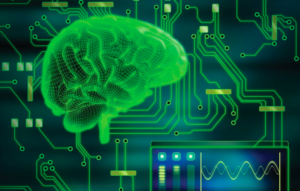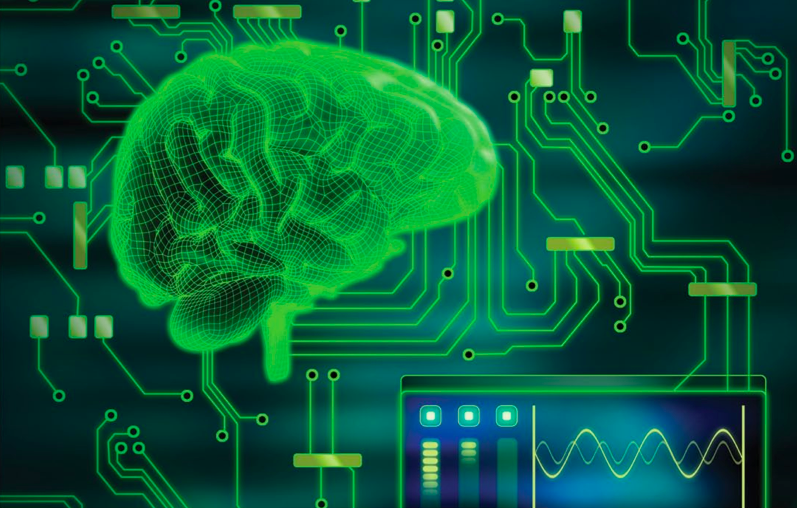
Brainwaves, images courtesy of RagMag magazine
In Palo Alto, California, anthropologist and senior researcher Jake Dunagan of the Institute for the Future specializes in neurocentric futures research. In his two and half years at the non-profit research organization which identifies trends and discontinuities that will transform global society and marketplace, Dunagan has worked with clients such as Intel, Skype, Nokia, and Disney. Forecasting human activity and studying its long-term development, Dunagan’s futurist team places consumers, workers and householders in the forefront, forcing companies across industries to look beyond technical feasibility.
Dunagan didn’t coin the term “neurocentric”. Adopting it from Carl Zimmer’s book “Soul Made Flesh,” about 17th century medical neurologists, Dunagan uses it to describe the next era in human civilization. “The brain,” he says, “is a central figure in the human drama of the 21st Century.”
As people envision the future within the same cognitive frameworks, and brain region, as their past experiences, they find it difficult to imagine its implications. “This makes sense evolutionary,” he says. “The same hunting techniques from your great- great grandfather still worked just as well for your great-great grandchildren.” Throughout human history the past has indicated the present and future. But this assumption changed during the industrial age as the world witnessed advances in technology and communication assisted with urban sprawl. With such conditions accelerating the pace of change in modern life, Dunagan argues that “the skills and assumptions about the world from generation to generation, and even within one’s own life, are less and less useful to understand and predict what tomorrow will bring.”
In understanding our complex future, his team uses methods such as—as experiential scenarios, artifacts from the future, and affective forecasting—to make the future tangible. Participants “feel” the future first through objects and imagery, and later create intellectual frameworks with which to analyze the scenarios. In short, these experiments are like psychological games which help expand people’s view of the future. In doing so, the social outcomes and our cognitive biases are changing.
Although rapid changes from business and culture to biology and geology has altered human development globally, Dunagan notes that humans are not biologically or culturally predisposed to such change of pace. Citing Alvin Toffler’s famous concept of ‘future shock’, as much as people adapt to change they still follow biological development patterns of building relationships and forming families. From climate change public service announcements to disaster preparedness campaigns, people are becoming conscious of decisions which impact our future. In San Francisco, The Red Cross posted billboards on trucks of disaster scenes and parked them in front of destroyed areas.
Not only was the campaign highly effective but it helped bridge the future to the present. On his blog The Skeptical Futuryst, experimental designer Stuart Candy calls this the “experiential gap”, the leap of imagination needed to hold today and tomorrow in our minds. Dunagan is in the business of tackling big ideas. Not a therapist or fortune- teller, but a man who weaves stories making people act in the interest of future generations. “We are society’s early warning system as well as a kind of prophetic story-teller,” says Dunagan. Because his team tries to understand vast fields of knowledge all at once, they are criticized for their “generalistic” approach.
In their defense, the team synthesizes trends to avoid blind spots that can occur when narrowing focusing on one area. The big idea is an ethical one begging the question: What is the future going to be like once we control our minds? “Control and freedom are always doing a little dance,” says Dunagan who admits that the real danger lies in the abuse of mental surveillance and control technologies. In his opinion, once the mind is controlled there is no “outside” from which to build or maintain any kind of resistance. “But, although we must be vigilant against these negative possibilities, our increased understanding of the brain and the mind, will yield great human benefit,” notes Dunagan.
SO, WHAT EXACTLY ARE WE GOING FOR?
A big part of his research is tracking neurocentric health. “The brain is becoming the focal point of a wide range of medical research and a whole host of new diagnostic and treatment tools,” says Dunagan who has focused on big shifts in medical paradigms in the last ten years. Such metrics re- evaluates what is considered normal. Dunagan does not have all the answers. Given the challenges to our sustainable future, finding the solutions for the “hell hole” humans have gotten themselves into will take decades, harps Dunagan. But there is hope. Evidently, past futurists were artists, activists and futures non-profits, but more and more private firms and governments are jumping on the bandwagon. “They are seeing the value in targeted experiential futures work, both for internal foresight and planning, as well as for external marketing and public relations,” Dunagan says.
Already in the past decade the fight against climate change became “a big picture synthesis in scale and time,” argues Dunagan. More recently, the Arab uprising that spread across the Middle east have raised “deep questions about the current reception as well as long-term viability of this particular genre of political and economic vision as an answer to people woes,” writes Stuart on his blog. The point is: Toggling through content knowledge to identify the big picture for future generations is detrimental for human’s sake. Whether we like it or not, our brain is extending through electronic and computational devices.
The neurocentric age expected to reach full maturity in the next two decades. As neuroscience helps us understand our brains better, it also creates persuasive technologies and practices. As Dunagan states, “It will be used to try and sell us more soup, and it will be used to try and get us to understand the global risks of our actions on the environment and climate.”
The full featured article in RagMag July 2011 (PDF)
[issuu width=550 height=359 pageNumber=60 backgroundColor=%23222222 documentId=110807082500-ecae37cdf18840dbb76152e4c6f4897e name=ragmag_july_2011 username=ragmag tag=beach unit=px id=ea8ae842-9ae1-b981-1b75-d8862336ed3a v=2]





